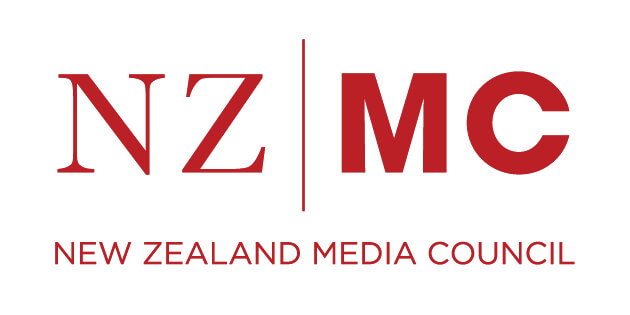HUGH PRICHARD AGAINST NEW ZEALAND HERALD
Case Number: 2773
Council Meeting: APRIL 2019
Decision: Not Upheld with Dissent
Publication: New Zealand Herald
Ruling Categories: Photographs
Overview
1. Hugh Prichard complained that a photograph of two naked women protesting on Karangahape Rd in Auckland published in theNew Zealand Herald on 9 February breached Principle 11, Photographs and Graphics.
2. The complaint was not upheld by the majority of the Media Council with one member dissenting.
Background
3. The photograph illustrated a story on the NZ Herald website headlined “Police investigating an assault of two females on Karangahape Rd following a powerful protest”. The story reported that two women had staged a public protest on Karangahape Road where they stood naked, with tape over their mouths, messages written on their chests, and with a blood-like substance smeared over their bodies. A sign in front of them explained the reason for the protest, which was over a lack of police response to their reporting of a physical assault by a male after they had rejected his sexual advances. It said: “How many women have to die on the streets and in their home before police respond to violence. When will men be held accountable for their violence?”
4. The story said police were following up “urgently” after the protest to discuss the women’s concerns about the way their report of the violence was handled, with a spokesperson saying it was “very concerning” the women felt let down by police.
The Complaint
5. Mr Prichard complained that the NZ Herald should not have published the photograph, saying publishing nudity is not necessary under any circumstances. He said the first photo in the story, taken from behind the women, provided all the information needed in picture form. The second picture, taken from in front, in his opinion added little to the newsworthiness of the story and showed a “lack of standards, which is unacceptable”.
6. He said it was the first time he could recall seeing a “full-nudity photo” in the press in New Zealand, and “it shouldn’t start happening”.
7. In further correspondence, Mr Prichard said the Herald should not partake in furthering public displays of indecent exposure: its role was to report it, not participate in it, he said.
8. He believed a portion of the image should have been blurred. The un-manipulated photograph did not provide any more information, nor would it have added to the subsequent follow-up action by police.
9. He accused the NZ Herald of “looking for an excuse to try this new precedent” [of publishing nudity] which was “unnecessary and unacceptable”.
The Response
10. The editor of the Weekend Herald and Herald on Sunday Stuart Dye defended theHerald’s right to run the image.
11. Mr Dye said publication caused no distress to the women themselves, since they had chosen that form of protest, which took place in a public place during daytime, and would have been seen by many people. Manipulating the photo to “sanitise the image” risked undercutting the powerful message behind the protest. He said the publication had prepared readers by placing a bold “Warning: graphic content” message at the top of the story; it was not the first image in the story, and it did not appear on the homepage.
12. Further, he said, the protesters were not arrested, nor have they been charged so there was no crime of indecent exposure. In fact the protest and media coverage had resulted in the women’s attacker being arrested by police and an internal investigation into the police handling of the original complaint.
13. He said publishing such an image was not a precedent, and denied the complainant’s “curious conspiracy” that theHerald was looking for an excuse to run a picture like this.
The Discussion
14. The basis of this complaint is that an image published online by the NZ Herald portrays “full-frontal nudity”, which Mr Prichard described as a public display of indecent exposure. He did not believe it added to the newsworthiness of the story, and some parts of it should have been “blurred”. Even though the article carried a warning, he was still unprepared for a “full-frontal nudity” image.
15. The editor of the Weekend Herald defended the use of the image in the story, which carried a warning about graphic content; he believed that manipulating the image to sanitise it would have undercut the powerful message it sent.
16. Although photographs depicting nudity are rare in mainstream media as the complainant observed, this was an exceptional situation in news reporting and the Media Council believes the means justified the end. The photograph of the two naked women is certainly confronting, but not gratuitous because it accurately portrays an event which took place on a public street, and this publicised a powerful protest about violence against women.
17. Using only the image taken behind the women would have had little impact since the messages on their chests and the blood-like smears on their bodies and the tape across their mouths could only be seen from in front of them. Pixellating naked body parts may have “sanitised” the image for readers who find nudity offensive, but we agree with the editor that the un-manipulated image was newsworthy.
18. Principle 11 states that editors should take care in photographic and image selection and treatment. We are satisfied that the graphic-content warning fulfilled that requirement.
19. The Media Council finds no breach of Principle 11.
Decision
The majority of the Media Council does not uphold the complaint.
Dissent
Craig Cooper dissented from this decision on the basis that the full frontal nude picture was not essential to the reporting of the event, and a cropped version could have been published, to reduce the potential for offence.
Media Council members considering this complaint were Sir John Hansen, Liz Brown, Craig Cooper, Jo Cribb, Jenny Farrell, Ben France-Hudson, Hank Schouten, Marie Shroff, Christina Tay, Tim Watkin and Tracy Watkins.
